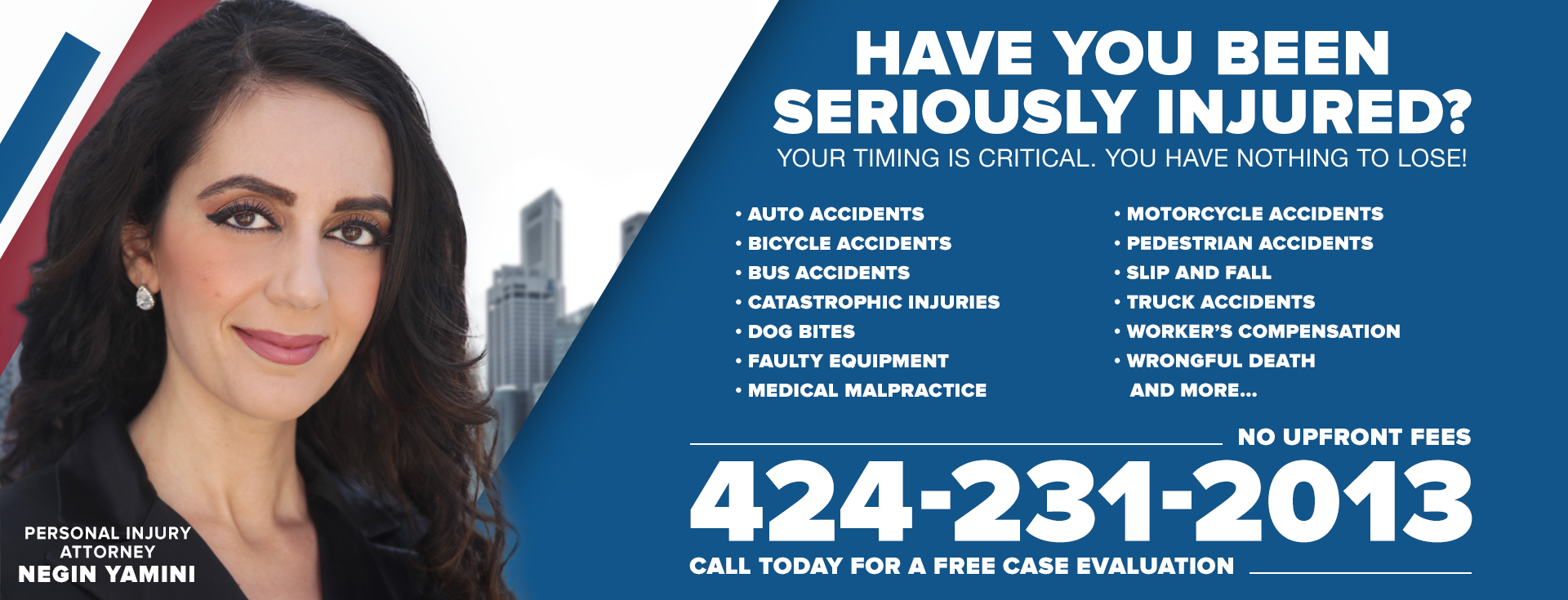It is frustrating and painful to be injured in a gym, a place you go to improve your health. When a seemingly safe workout ends in a trip to the emergency room, you may wonder: Can I sue if a malfunctioning or defective machine caused the injury? This is not just a matter of gym policy. It involves important questions of legal responsibility. It could be a cable that snaps in the weight machine, a treadmill belt that suddenly stops, or even a loose bench press pin. You need to know your legal rights.
Although gyms usually require you to sign a liability waiver, these waivers do not always protect them from negligence claims. The information below addresses the legal context of gym equipment-related injuries, which will help you determine whether your case is valid and what actions to undertake next.
What You Should Know About the Liability Waiver of the Gym in California
Gym liability waivers are contractual documents you sign to waive the right to sue the gym for injuries caused by the normal exercise risks. Nevertheless, in California, these waivers do not work as a get-out-of-jail-free card in the case of gyms.
A contractual provision under the California Civil Code 1668, which seeks to confer an exemption of liability of a party in its own foul play, willful injury, or negligent or willful violation of the law, is against the public policy. This is to say that a gym can insulate itself against ordinary negligence, like an accident, because a member slips on a wet floor that has just been mopped, but cannot rely on a waiver to avoid gross negligence.
What is Gross Negligence?
The most important exception is gross negligence. Gross negligence is more than a simple error. It is a reckless disregard for the safety of others. You can consider it a far greater degree of wrongdoing than simple negligence. For example, if a member suffers an injury because the gym knowingly left equipment in a dangerous and defective condition without warning, it falls under gross negligence on their part.
Here is how to think about the difference:
- Ordinary negligence — A personal trainer briefly looks away, and a client drops the weight on their foot. It is a careless mistake, but not reckless.
- Gross negligence — An owner of a gym is frequently warned by employees that a huge light fitting is unstable and ready to fall, but they do not pay any attention to the warnings, and the fitting finally falls and harms a member. This is a deliberate and reckless disregard for safety.
The difference between ordinary and gross negligence is crucial, since it will decide whether a gym will succeed in its liability waiver in a court of law. Although you cannot sue for the everyday risks of working out, like the fact that you pulled a muscle or a light dumbbell dropped on you, you may sue in case of the gross negligence of the gym that caused your injuries.
A Duty of Care and Premises Liability of a Gym
California premises liability law places a duty of care on a gym to ensure a reasonably safe environment for its members. This legal principle allows a lawsuit to proceed, despite the member signing a liability waiver, by focusing on the gym's negligence and not the risk of the exercise.
The Gym's Duty as a Business Owner
A gym is regarded as a “business owner” in California that welcomes people on its premises with a commercial motive. Legally, its members are termed as invitees. Under premises liability law, business owners owe the highest duty of care to invitees to maintain safe premises and warn them of known dangers. This is not a mere courtesy, but a legal obligation. This is a duty of care, and it is a foundation of negligence claims.
The duty of care is not an abstract idea that a gym should have. It has various obligations that are necessary to ensure the safety of members. These include:
- Routine inspections and maintenance — A gym should regularly check the equipment and facilities to identify any possible hazards to avoid, for example, a worn-out cable to a weight machine, a loosely fitting bolt to a bench, or a broken locker tile. The gym should have a regular maintenance program.
- Perform timely repairs — If a gym is aware or ought to have been aware of a hazardous situation, the broken piece of equipment should be repaired or replaced promptly. For example, when the belt of a treadmill is slipping, they must fix it promptly.
- Warnings of dangers — When a hazard cannot be resolved immediately, the gym should ensure that there are easy-to-understand and visible out-of-order signs on faulty equipment or other hazardous areas and that members are prevented from accessing them. For example, a gym should not allow a member to use a defective machine.
A breach of duty occurs when a gym fails to fulfill these obligations. A waiver may help defend a gym against the risk of claims of ordinary negligence, like a simple slip on a wet floor that had just been mopped, but it is ineffective in defense of a breach of gross negligence.
For example, if a member reports a wobbly leg on a squat rack and a gym employee ignores the report and the rack collapses, injuring a member, this would be a textbook example of breach of duty, which constitutes gross negligence. The fact that the gym has not fulfilled its primary responsibility of inspecting, maintaining, and warning of a known hazard is evidence of the careless attitude toward the safety of the gym members. This is a critical legal vulnerability for gyms, as a court may rule that their actions go beyond negligence, rendering the liability waiver ineffective.
Identifying All Potentially Liable Parties
If you are injured in a gym, the gym might not be the sole culprit. A thorough legal analysis involves identifying everyone who could be held responsible for your injuries. Besides the gym, other parties in the design, manufacture, or maintenance chain may also be held liable. Some key potentially liable parties include:
-
The Gym or Fitness Center
As a business owner, the gym's liability typically falls under premises liability law. This means they can be held accountable for injuries caused by their neglect in ensuring that you, as their member, are in a safe environment. This involves careless behaviors, including:
- Lack of inspection — The gym did not inspect the premises and equipment to ensure no hazards.
- Failure to maintain or repair — The gym knew that a machine was broken, such a weight bench with a loose bolt, but they did not repair it promptly.
- Failure to warn — The gym knew that a particular piece of equipment was malfunctioning, but they did not put an out-of-order label on it to prevent you from using it.
The gym might be one of the main defendants in case one of these careless acts caused your injury.
-
The Designer or Equipment Manufacturer
This is where the legal principle of product liability comes in. If your injury was not caused by the gym's negligence but by a faulty piece of equipment, you may sue the manufacturer or designer. Product liability is treated as a strict liability matter in California, which favors you as the injured consumer. This means you should demonstrate that the manufacturer was careless in designing the product. It is necessary to show that the product was faulty and that the fault resulted in your injury.
Product defects are of three broad categories:
- Manufacturing defect — There was an error in manufacturing one product or batch of products, which renders one product or batch of products hazardous, such as a bad weld on one weight machine.
- Design defect — The product's structure is unsafe despite being produced flawlessly, for example, a treadmill with a poorly designed safety shut-off system.
- Failure to warn — The manufacturer did not give reasonable instructions about the product's hidden risk.
-
The Maintenance or Repair Company
Other gyms contract the maintenance services of their equipment to a third-party firm. The third-party company may also be liable if your injury was caused by careless repair or improper maintenance. Their contractual obligation to the gym to maintain the equipment safely may be transferred to the gym's members, including you. In this case, you may sue the gym for negligent supervision of the contractor and the maintenance company due to their negligent service.
With all the culpable parties held liable, you can maximize your potential for compensation for medical costs, lost earnings, and suffering.
What to Do Immediately After Your Injury
A gym-related injury is a stressful and confusing situation, and the steps you take during the minutes and hours that follow the event are crucial for any potential legal claim. The evidence you gather immediately can make the difference between a successful case and a dismissal.
-
See a Doctor
Your health is the top priority. Even though you may think the injury is minor, seeking a medical evaluation is necessary. Internal damage or concussions are some of the serious injuries that may not be clearly noticed.
Seeking immediate medical attention achieves two purposes:
- It ensures you are treated
- It provides the official, written documentation of your injuries
The record is a significant part of any court case and directly relates your injury to the accident.
-
Report the Injury to the Gym Manager
Report your injury to a manager or a senior employee. Do not just tell a front desk employee. Demand that an official incident report be made. This report is an important document that records the time, date, and place of your injury. If the gym resists or tries to discourage you from making a report, you should also write down their objection. Be factual and stick to the facts of what occurred. Do not exaggerate or downplay your injuries.
-
Document the Scene and the Equipment
You should document the faulty equipment before the gym can remove or repair it. Take several high-resolution photos and videos with your phone of the machine and the space where you have been injured with your phone. Take a picture of the machine, individual broken components, and the overall environment. When you can, shoot at various angles and varying distances to provide context. This photographic evidence is usually the most effective item in a case, which can physically demonstrate the gross negligence of a gym.
-
Obtain Witness Information
If anyone else was in the area, witnessed the accident, or had previously seen the equipment in a faulty state, write down their name and contact information. Witness testimony can strongly support your case and add credibility to your claims. You should also ask if they would be willing to provide a brief written statement of what they saw.
-
Preserve Evidence
If a piece of equipment breaks off and leaves you injured, you should preserve it. Remember to record where it is and carefully photograph it unless you can safely carry it with you. Physical evidence may prove invaluable when showing a product defect or careless maintenance. Also, remember to take in all your medical records, bills, and correspondence with the gym or their insurance company.
The Types of Evidence Needed For Your Negligence Lawsuit
Proving a gym was negligent requires more than just your word. Your lawyers will be required to develop a strong case with evidence. This crucial step shows the gym's violation of its duty of care. Some of the evidence you need includes the following:
- The equipment itself — The most important thing is to secure the faulty machine. The gym will receive a spoliation letter sent by your legal team. This is a legal demand to keep the equipment in the same condition as at the time of the incident. This enables a professional engineer or product safety expert to check whether the machine has a design or manufacturing defect. Their evidence and advisory services may form the basis of your case, particularly in product liability.
- Maintenance and repair logs — The gym's in-house records are valuable evidence. Maintenance and repair logs of the exact piece of equipment that caused your injury can be gathered through the legal discovery process by your attorney. When these logs reveal a record of past reported difficulties with the machine that had not been resolved, it is strong evidence that the gym was aware of the risk, and it was gross negligence of the gym not to fix it. On the other hand, the lack of records might indicate that the gym had not conducted regular maintenance, yet another form of negligence.
- Witness testimony — The list of testimonies from the other gym members who witnessed the accident or had already reported about faulty equipment can reinforce your argument. Their firsthand testimonies can support your side of the case and also assist in creating a pattern of negligence on the side of the gym.
- Expert witness analysis — Your legal team can also employ other experts and an engineer to testify on your behalf. A fitness industry professional may explain a gym's standard of care and how the gym's activities (or lack thereof) were not up to the standard. A doctor can witness the nature and extent of your injuries and the long-term effects on your life.
Calculating the Value of Your Claim
The value of your personal injury claim can be calculated by addressing two broad types of damages to ensure you receive full compensation for your losses.
-
Economic Damages
Economic or tangible losses are the direct and quantifiable damages that can be calculated using bills, receipts, and wage statements. They are designed to put you back in the financial position you were in before the injury. These damages include:
- Medical bills — Past and future amounts of emergency room visits, hospital care, physicians' visits, surgeries, physical therapy, prescription drugs, and rehabilitation.
- Lost wages and lost earning capacity —The income you have lost through inability to work and any future income you will lose is not due to your inability to work at the same capability as before due to injury.
-
Non-Economic Damages
Non-economic damages (Intangible losses) are more subjective and compensate you for the physical and emotional toll the injury has taken. They do not have a specific dollar value as economic damages, but are a crucial component of your case. California law does not limit non-economic damages for most personal injury cases.
Non-economic damages include:
- Pain and suffering — The physical pain you have had due to the injury and during the treatment
- Emotional distress — The mental effects of the injury, for example, anxiety, fear, or depression
- Loss of enjoyment of life — Your inability to engage in activities, hobbies, or day-to-day activities as you liked before the injury, for example, exercise, playing with your children, or your favorite sports.
These non-economic damages are usually estimated by the multiplier method, whereby your economic damages are multiplied by a figure, generally between 1.5 and 5, depending on the level of your injury and its impact on your life.
Find a Personal Injury Attorney Near Me
Being the victim of malfunctioning gym equipment is frustrating and painful. You have legal rights, and gyms can be held liable for negligence. A consultation with a personal injury attorney will help determine whether you have a valid claim for damages.
If you or a loved one was injured by faulty equipment, attorneys at Los Angeles Personal Injury Attorney can help. Contact us at 424-231-2013 for a free consultation and allow us to fight for the justice and compensation you deserve.
























